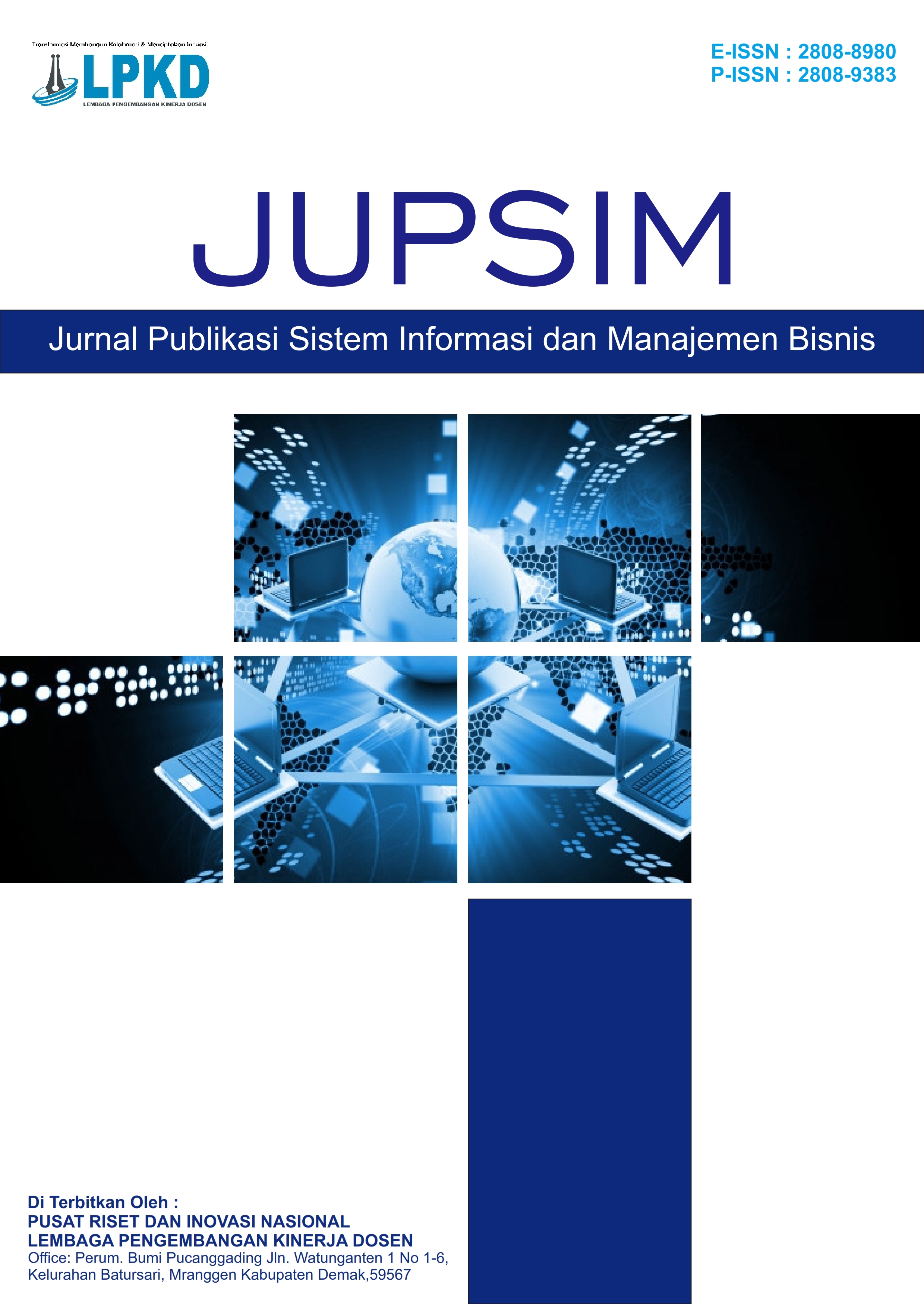Evaluasi AWS CodeDeploy dalam Meningkatkan Efisiensi Deployment Website Personal Image Studio (PIS) Japan Career Berbasis Cloud
DOI:
https://doi.org/10.55606/jupsim.v4i3.5398Keywords:
AWS CodeDeploy, Automated Deployment, Cloud Computing, Efficiency, ReliabilityAbstract
This study evaluates the effectiveness of AWS CodeDeploy in enhancing the efficiency and reliability of website deployment for Personal Image Studio (PIS) Japan Career by utilizing cloud-based infrastructure. Manual deployment processes often involve multiple steps, are time-consuming, and highly susceptible to human error, which can lead to service disruption and operational inefficiencies. To address this issue, a quantitative experimental method was conducted by comparing two deployment approaches: traditional manual deployment and automated deployment using AWS CodeDeploy. The evaluation focused on two primary indicators: deployment time and system reliability. The results revealed a significant improvement in time efficiency, where automated deployment reduced the average deployment duration from 240 minutes to just 33 minutes — an efficiency gain of 86.25%. In terms of reliability, automated deployment achieved an 80% success rate, doubling the 40% success rate observed in manual deployment processes. Moreover, AWS CodeDeploy offers several advanced features such as automatic rollback on failure, seamless integration with monitoring services like AWS CloudWatch, and support for continuous deployment pipelines. These capabilities not only minimize downtime and configuration errors but also ensure consistent and scalable application delivery. Overall, the findings demonstrate that AWS CodeDeploy is a powerful tool that significantly improves the performance and dependability of cloud-based deployment workflows for modern web applications.
References
Andriani, A. (2013). Pemanfaatan cloud computing dalam pengembangan bisnis. Seminar Nasional Teknologi Informasi Dan Multimedia, 3-18.
AWS. (2025). AWS CloudFormation - Overview of deployment options on AWS. March. https://docs.aws.amazon.com/whitepapers/latest/overview-deployment-options/aws-cloudformation.html
Cahya Kurniawan, A., Tibyani, T., & Amalia, F. (2020). Implementasi teknologi cloud computing untuk e-learning berbasis website dengan framework Laravel (Studi Kasus: MAN 9 Jombang). Jurnal Pengembangan Teknologi Informasi Dan Ilmu Komputer, 4(11), 3833-3844. https://j-ptiik.ub.ac.id/index.php/j-ptiik/article/view/8141
Cepuc, A., Botez, R., Craciun, O., Ivanciu, I. A., & Dobrota, V. (2020). Implementation of a continuous integration and deployment pipeline for containerized applications in Amazon Web Services using Jenkins, Ansible and Kubernetes. Proceedings - RoEduNet IEEE International Conference, 2020-Decem. https://doi.org/10.1109/RoEduNet51892.2020.9324857
Gadani, N. N., & Devan, K. (2024). Leveraging the AWS cloud platform for CI/CD and infrastructure automation in software development. International Journal of Intelligent Systems and Applications in Engineering, 2024(23s), 350-356. www.ijisae.org
Hyun, G., Oak, J., Kim, D., & Kim, K. (2024). The impact of an automation system built with Jenkins on the efficiency of container-based system deployment. Sensors, 24(18), 1-12. https://doi.org/10.3390/s24186002
Lukita, D., & Setyo Utomo, F. (2024). Sistem informasi pengolahan data nilai siswa menggunakan AWS berbasis web. Journal of Informatics and Interactive Technology, 1(3), 206-214. https://doi.org/10.63547/jiite.v1i3.24
Pagels, M., Eloranta, V., & Itkonen, J. (2015). Focus: Release engineering.
Proulx, A., Raymond, F., Roy, B., & Petrillo, F. (2018). Problems and solutions of continuous deployment: A systematic review. http://arxiv.org/abs/1812.08939
Rudrabhatla, C. K. (2020). Comparison of zero downtime based deployment techniques in public cloud infrastructure. Proceedings of the 4th International Conference on IoT in Social, Mobile, Analytics and Cloud, ISMAC 2020, 1082-1086. https://doi.org/10.1109/I-SMAC49090.2020.9243605
Saintikom, J., Sains, J., Informatika, M., Maulana, I., Umar, R., & Yudhana, A. (2024). Implementasi deployment layanan website menggunakan Kubernetes dengan CI/CD Jenkins. 23, 290-296. https://doi.org/10.53513/jis.v23i2.9992
Shahin, M., Ali Babar, M., & Zhu, L. (2017). Continuous integration, delivery and deployment: A systematic review on approaches, tools, challenges and practices. IEEE Access, 5(Ci), 3909-3943. https://doi.org/10.1109/ACCESS.2017.2685629
Syed, F. A. (2025). Performance and features of Amazon S3. International Journal of Scientific Research and Engineering Trends, 11(1), 252-258. https://doi.org/10.61137/ijsret.vol.11.issue1.119
Teja Thallam, N. S. (2025). AI-powered monitoring and predictive maintenance for cloud infrastructure: Leveraging AWS CloudWatch and ML. International Journal of Artificial Intelligence, Data Science, and Machine Learning, 6(1), 55-61. https://doi.org/10.63282/3050-9262.IJAIDSML-V6I1P107
Wira Pradipta, K., Presiana Desi, Y., Khuntari, D., Tinggi Multi Media, S., Alamat, Y., & Magelang Km, J. (2024). Pengaruh kualitas sistem dan kualitas informasi aplikasi Jogja Smart Services (JSS) terhadap kepuasan pengguna pada masyarakat Yogyakarta. Jurnal Ilmiah Manajemen Informasi Dan Komunikasi, 8(1), 45-57. https://doi.org/10.56873/jimik.v8i1.333
Downloads
Published
How to Cite
Issue
Section
License
Copyright (c) 2025 Jurnal Publikasi Sistem Informasi dan Manajemen Bisnis

This work is licensed under a Creative Commons Attribution-ShareAlike 4.0 International License.







